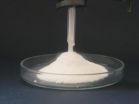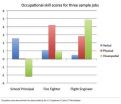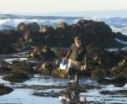(Press-News.org) Researchers from the Cardiac & Vascular Institute at NYU Langone Medical Center will present at the Transcatheter Cardiovascular Therapeutics (TCT) 2010 scientific symposium on September 21-25, 2010 in Washington, DC. They will be available for interviews during the conference.
Louis Miller, MD
Interventional Cardiology Fellow, Department of Medicine, Leon H. Charney Division of Cardiology at NYU Langone Medical Center
Wednesday, September 22, 2010
Presenter
•Very Long-term Clinical Follow-up After Fractional Flow Reserve-Guided Coronary Revascularization, 1:00pm
Embargoed Abstract - September 22, 1:00pm:
This study followed approximately 150 patients over the last decade, who underwent cardiac catheterization and were found to have angiographically significant coronary lesions that were borderline in severity. A technique called fractional flow reserve (FFR) was used to determine the physiologic significance of these lesions, and guide decisions regarding whether to revascularize these lesions with stents or surgery, or to treat with medical therapy alone. Researchers determined that there was no difference in adverse events including excess mortality, cardiac death, heart attack, need for later revascularization, or angina in patients who underwent FFR-guided revascularization at that time versus those that did not. Researchers believe this is the longest clinical follow-up of patients undergoing FFR-guided revascularization to date. An FFR-guided approach to coronary stenoses of borderline severe lesions is safe and effective over a period of at least 10 years, and has no excess risk of angina, need for further revascularization, heart attacks, or death. This study was done in collaboration with The Manhattan VA.
Judith S. Hochman, MD
Harold Snyder Family Professor of Cardiology, Clinical Chief, Leon H. Charney Division of Cardiology and Director, Cardiovascular Clinical Research Center at NYU Langone Medical Center
Thursday, September 23, 2010
Moderator
•Coronary Revascularization Decisions -Building on COURAGE, SYNTAX and BARI-2D, 2:00pm to 6:00pm
Lecturer
•Focus on Ischemia: The ISCHEMIA Trial Design, 2:52pm
Moderator
•Difficult Patients and Dilemmas in Interventional Cardiology- Session IV: Too Many Coronary Angiograms and/or Not Enough Stress Tests?, 4:31pm to 5:28pm
Lecturer
•Current Recommendations for Revascularization in Asymptomatic or Minimally Symptomatic, Patients and Multivessel Disease, 5:28pm
Frederick Feit, MD,
Associate Professor, Department of Medicine, Leon Charney Division of Cardiology and Director of Interventional Cardiology Training Program at NYU Langone Medical Center, and Director, Cardiac Catheterization and Interventional Cardiology at Bellevue Hospital
Thursday, September 23, 2010
Moderator
•Diabetes and Cardiovascular Disease: 2010 Update, 12:15 pm to 1:55 pm
Lecturer
•Antithrombotic and Antiplatlet Therapy in ACS and Diabetes, 1:27 pm
Lecturer
•Glass Overflowing: Even with its Limitations, BARI-2D Supports Revascularization in Most Diabetic Patients, 3:33 pm
Friday, September 24, 2010
Lecturer
•Tough Calls in the Cath Lab: Case-Based Reviews - Coronary Anomalies, 8:30 am
INFORMATION:
About NYU Langone Medical Center
NYU Langone Medical Center is one of the nation's premier centers of excellence in healthcare, biomedical research, and medical education. For over 170 years, NYU physicians and researchers have made countless contributions to the practice and science of health care. Today the Medical Center consists of NYU School of Medicine, including the Smilow Research Center, the Skirball Institute of Biomolecular Medicine, and the Sackler Institute of Graduate Biomedical Sciences; and the NYU Hospitals Center, including Tisch Hospital, a 705-bed acute-care general hospital, Rusk Institute of Rehabilitation Medicine, the first and largest facility of its kind, and NYU Hospital for Joint Diseases, a leader in musculoskeletal care, a Clinical Cancer Center and numerous ambulatory sites.
END
An unusual substance known as "dry water," which resembles powdered sugar, could provide a new way to absorb and store carbon dioxide, the major greenhouse gas that contributes to global warming, scientists reported at the 240th National Meeting of the American Chemical Society. The powder shows bright promise for a number of other uses, they said. It may, for instance, be a greener, more energy-efficient way of jump-starting the chemical reactions used to make hundreds of consumer products. Dry water also could provide a safer way to store and transport potentially harmful ...
COLUMBIA, Mo. – Although obesity is a major risk factor for disease, much of the threat may be associated with the metabolic (or cardiometabolic) syndrome, a cluster of risk factors related to diabetes and heart disease. Losing weight can improve health and reduce many of these risk factors. However, many people struggle to keep the weight off long-term. Now, researchers at the University of Missouri have found that people who perform resistance training while regaining weight can help maintain strides in reducing their risks for chronic disease.
"Long-term weight loss ...
Imagine devices that capture electricity from the air — much like solar cells capture sunlight — and using them to light a house or recharge an electric car. Imagine using similar panels on the rooftops of buildings to prevent lightning before it forms. Strange as it may sound, scientists already are in the early stages of developing such devices, according to a report at the 240th National Meeting of the American Chemical Society.
"Our research could pave the way for turning electricity from the atmosphere into an alternative energy source for the future," said study ...
Portable devices that use a laser beam to probe bones, teeth, and other parts of the body for early signs of diseases like osteoporosis and tooth decay may seem like something out of science fiction. But those devices are moving closer to reality, according to an article in the current issue of Chemical & Engineering News (C&EN), ACS' weekly newsmagazine.
C&EN Senior Editor Celia Henry Arnaud notes that these new diagnostic tools will have the ability to see beneath the skin and detect disease, without exposing patients to X-rays. They embrace a technology that involves ...
Toronto, Canada – In an international study of patients with a devastating type of dementia that often strikes in middle age, researchers have found intriguing evidence that career choice may influence where the disease takes root in the brain.
The study was led by Baycrest's Rotman Research Institute in collaboration with the Memory and Aging Centre at the University of California, San Francisco and several U.S. and European clinical sites. It appears online today in the Article in Press section of the journal Neuropsychologia, ahead of publication.
Researchers ...
A study led by St. Jude Children's Research Hospital investigators links the muscle weakness and other symptoms of a rare neurodegenerative disease to a misstep in functioning of a normal protein, rather than its build-up inside cells. The finding offers insight into the mechanism driving common nervous system disorders like Parkinson's and Alzheimer's diseases.
The work advances understanding of how the inherited mistake at the heart of spinobulbar muscular atrophy (SBMA) leads to the death of neurons in the brain and spinal cord. Investigators showed that the underlying ...
September 22, 2010 -- Most studies of the food choices available near public schools have focused on fast food outlets rather than the full range of options available to schoolchildren. A new study by researchers at Columbia University's Mailman School of Public Health examined the patterns of exposure to a broad range of food outlets for school children in New York City.
The study, "Disparities in the Food Environments of New York City Public Schools," is published in the American Journal of Preventive Medicine Volume 39, Issue 3, and cited as the "Editor's Choice" ...
Bethesda, Md. (September 22, 2010) – Taking chromium picolinate may help lessen inflammation associated with diabetic nephropathy (kidney disease), say researchers at the Medical College of Georgia in Augusta. In a study comparing diabetic mice treated with chromium picolinate with those that received placebo, the researchers found that mice who received the supplement had lower levels of albuminuria (protein in the urine), an indication of kidney disease.
The Study
To arrive at their conclusions, the researchers compared three groups of mice, one lean, healthy group ...
(Santa Barbara, Calif.) –– Sometimes, treasures can be found in your own backyard –– especially if you know what to look for. This is what happened to Jeff Goddard, project scientist with the Marine Science Institute at UC Santa Barbara.
Goddard was working in the tide pools at Carpinteria Reef, in Carpinteria State Park, Calif., when he found a new species of nudibranch –– a group of sea slugs noted for their bright colors and delicate forms. Recognizing it as new, Goddard carefully documented the living specimen before preserving it and sending it off to Terrence M. ...
By following the "nose" of fruit flies, Yale scientists are on the trail of new insect repellents that may reduce the spread of infectious disease and damage to agricultural crops. That's because they've learned for the first time how a group of genes used to differentiate smells is turned on and off, opening new possibilities for insect control. Just as in new drug development, researchers can target these or similar genes in other insects to create substances that make crops and people "invisible" to insect antennae. Without the ability to smell correctly, the insects ...


